4. Components
Drum Pads
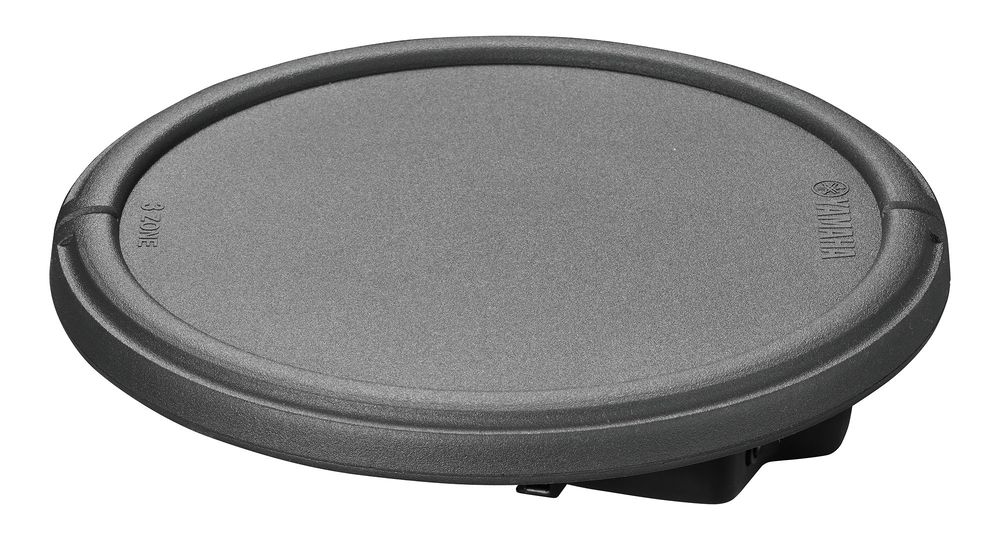
Yamaha TP70S 7,5" Snare Drum Pad
As impulse transmitters, drum pads have a trigger in the form of a piezo (piezoelectric transducer) or an FSR pressure sensor. When the pad is struck, the resulting signal is converted into sound by the drum module, which is assigned to the corresponding pad. The pads are connected to the drum module by cables, usually using standard jack cables. Most pads have a diameter of ten inches, making them smaller than acoustic shells and easier to position. The triggers in the pads are velocity-sensitive: if you hit it hard, it gets loud - if you play lightly, you'll hear only quiet sounds. More sophisticated pads have different playing zones, and the generated sound depends on the zone you are playing on. For example, with many e-drum sets, it is possible to assign a second sound, such as a cowbell or a tambourine, to the rims of the toms, or to play rimshots and rimclicks on a three-zone snare pad. However, such multi-zone pads require a module that supports this technology.
Mesh Head or Rubber Pad?
While older or very affordable e-drum sets often have rubber pads or membrane heads, in recent years, even entry-level kits have gradually adopted woven heads, known as "mesh heads." These offer a slightly softer playing feel that is gentler on the wrists and closer to the acoustic drum set, making them more versatile for different playing styles. In addition, they are variable in tension and significantly quieter in terms of striking noise than their rubber counterparts. Nevertheless, rubber pads also serve their purpose perfectly. The triggering properties are usually flawless, and due to the firmer playing surface, complex patterns can often be played more easily on them than on mesh heads. Drummers with wrist problems may prefer rubber pads due to their firmer playing surface. In this case, they could also consider using low-vibration drumsticks, such as those offered by Zildjian, to reduce stress on their wrists.
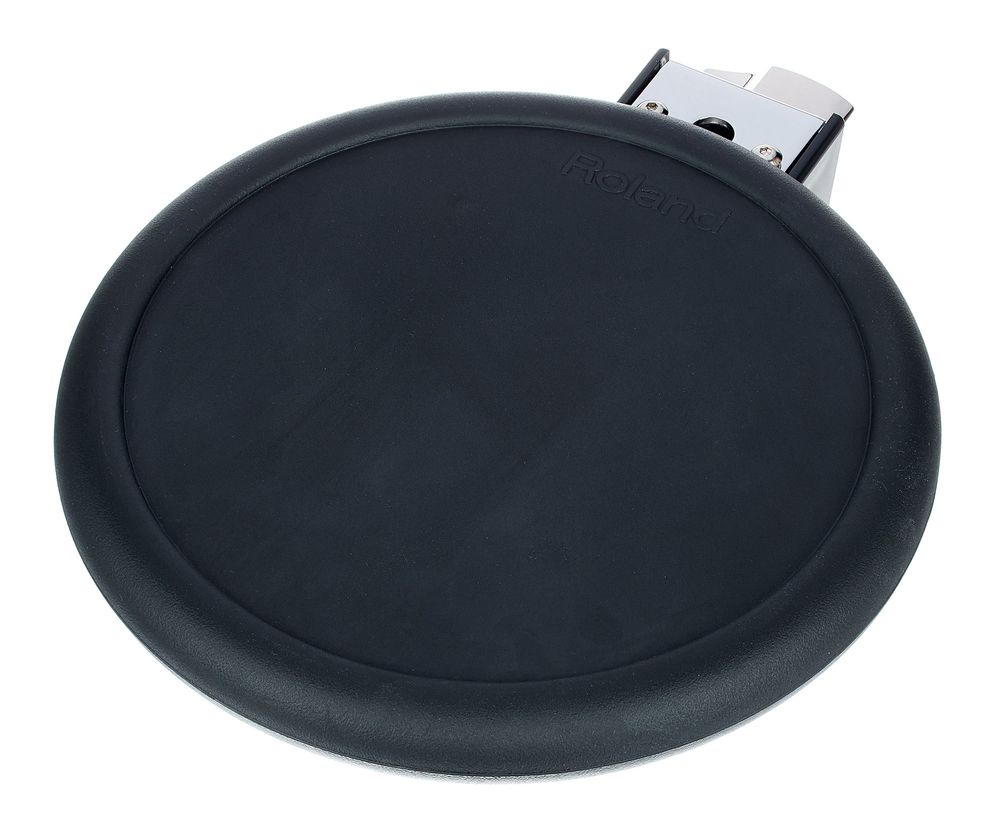
Roland PD-8 V-Drum Stereo Gummi Pad
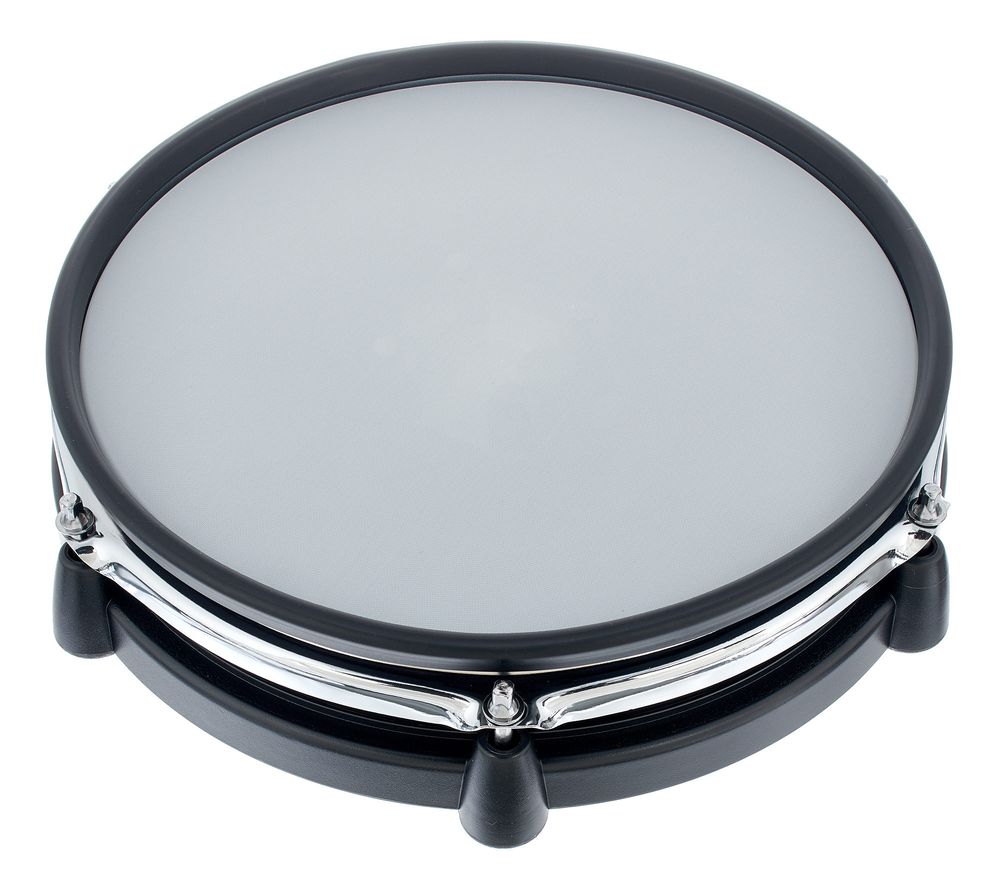
Millenium MPS-850 10" Mesh Head Pad
While older or very affordable e-drum sets often have rubber pads or membrane heads, in recent years, even entry-level kits have gradually adopted woven heads, known as "mesh heads." These offer a slightly softer playing feel that is gentler on the wrists and closer to the acoustic drum set, making them more versatile for different playing styles. In addition, they are variable in tension and significantly quieter in terms of striking noise than their rubber counterparts. Nevertheless, rubber pads also serve their purpose perfectly. The triggering properties are usually flawless, and due to the firmer playing surface, complex patterns can often be played more easily on them than on mesh heads. Drummers with wrist problems may prefer rubber pads due to their firmer playing surface. In this case, they could also consider using low-vibration drumsticks, such as those offered by Zildjian, to reduce stress on their wrists.
Bass drum pads and controllers
For a more authentic playing experience, it is recommended to use a vertically mounted pad with a rubber surface or mesh head that is operated with a conventional bass drum pedal. Most pads are wide enough to accommodate a double bass drum pedal, and in the upper price range, real bass drum shells with padded mesh heads are often used. Inexpensive e-drum sets may have controller pedals with triggers located under the pedal in the plastic housing of the controller, but these may not provide the same playing feel as a "real" bass drum.
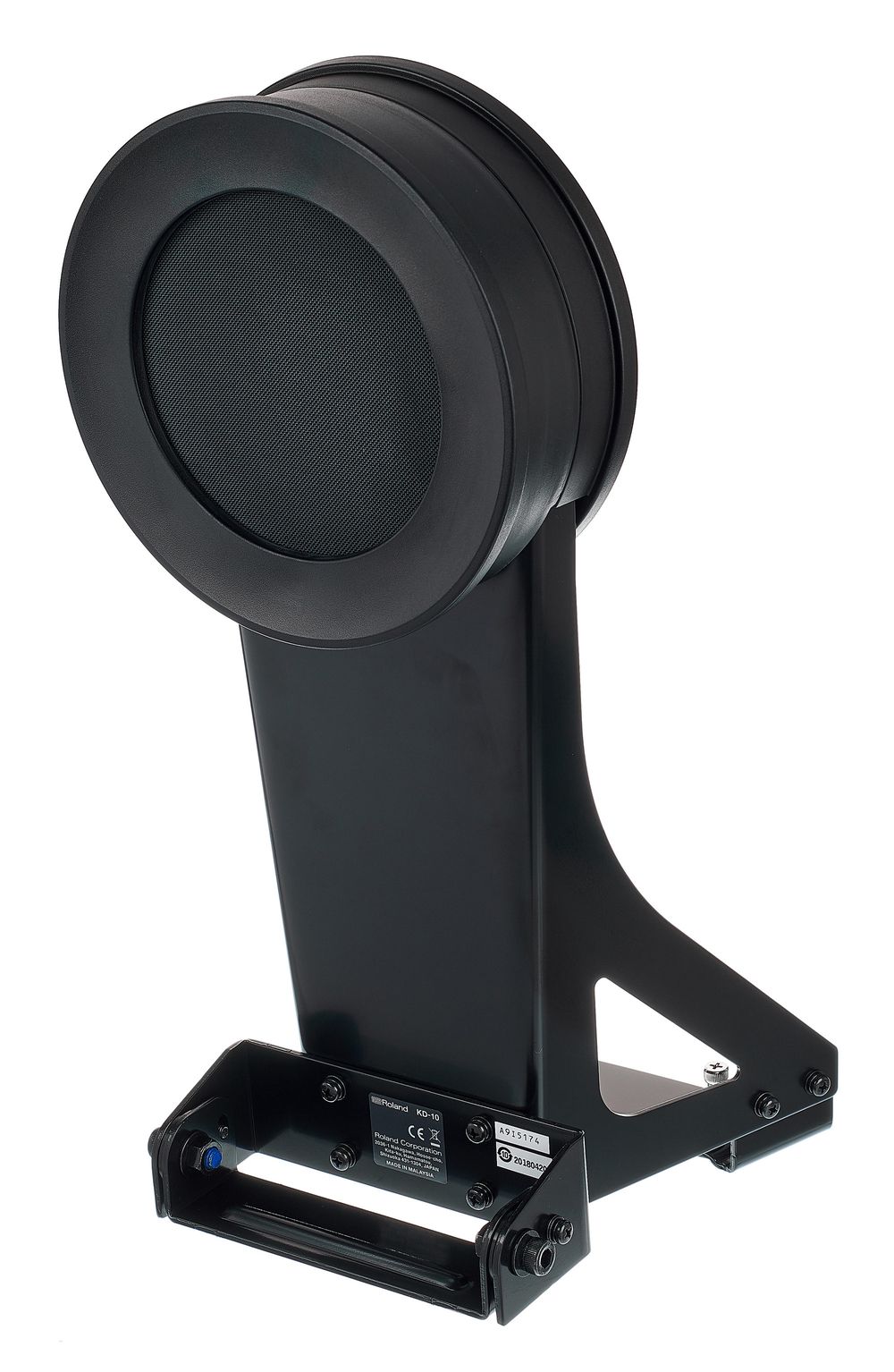
Roland KD-10 Kick Pad
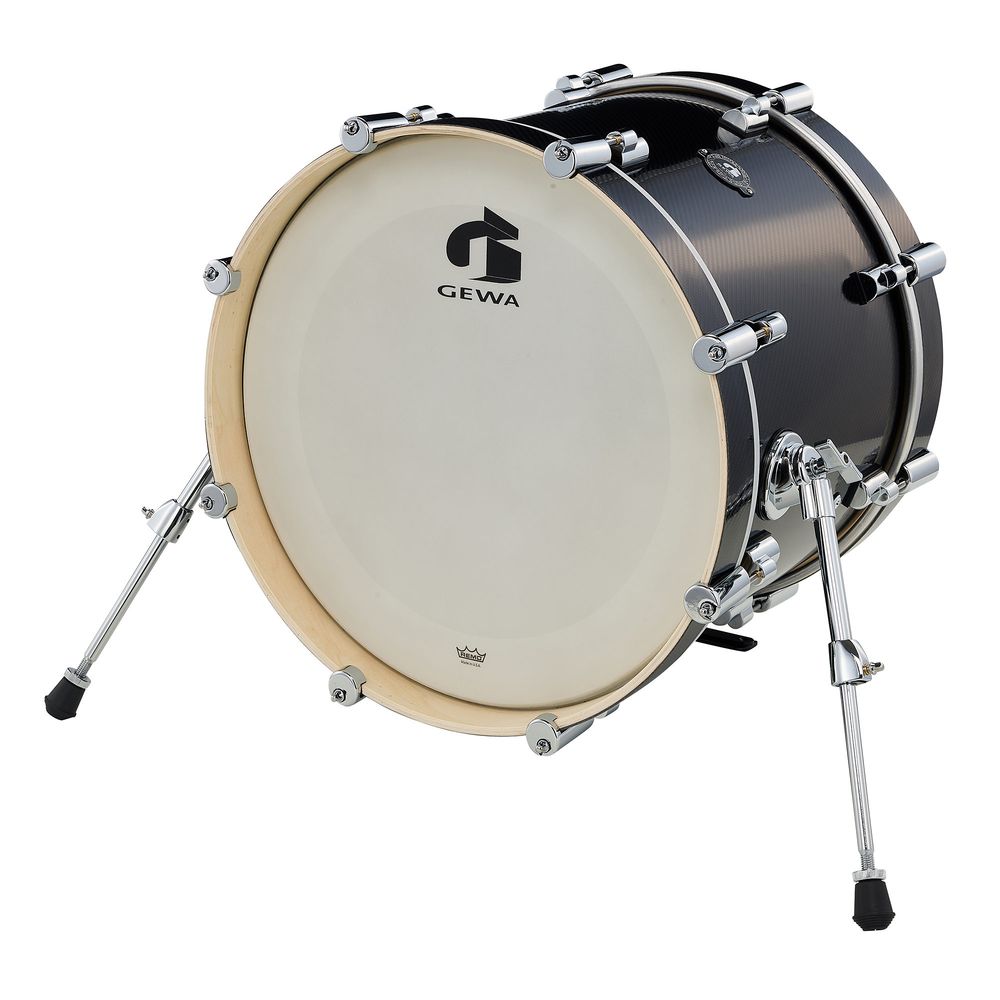
Gewa EKD-18-C 18" Mesh Head Kick
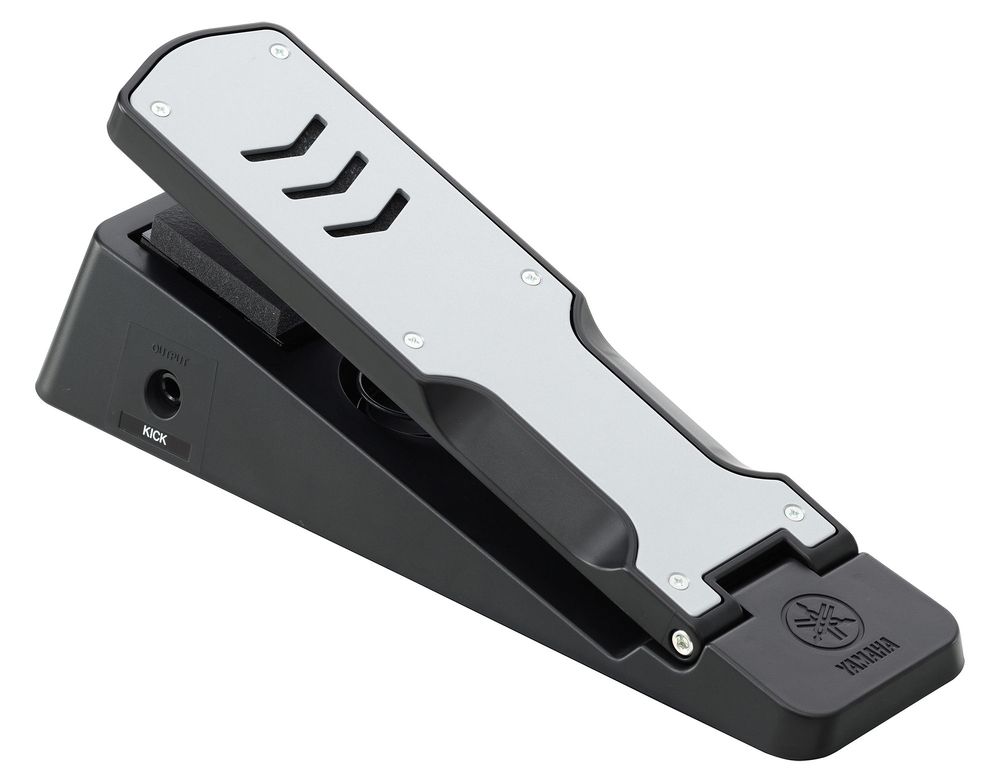
Yamaha KU100 Silent Kick Pedal
Cymbal pads
There are special cymbal pads coated with rubber and available in various shapes. Lower-priced e-drum sets may have pads with a maximum of two playing surfaces, but high-end drum sets often use three-zone pads (rim, surface, cup) that can be played all around, providing a very authentic playing feel.
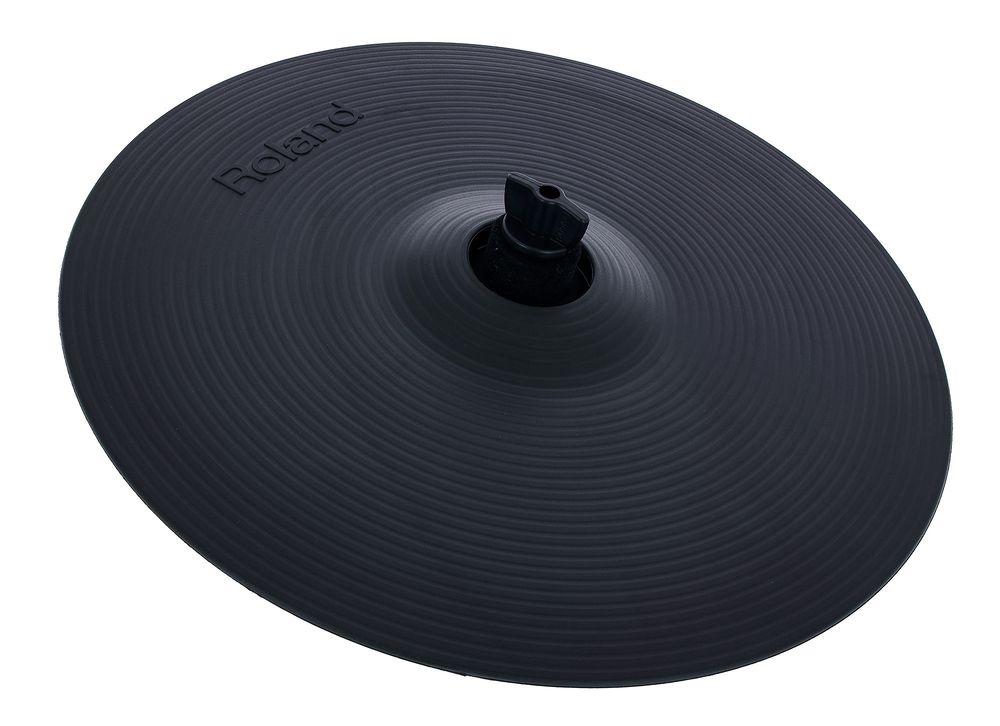
Roland CY-12C-BK 12" V-Cymbal Crash
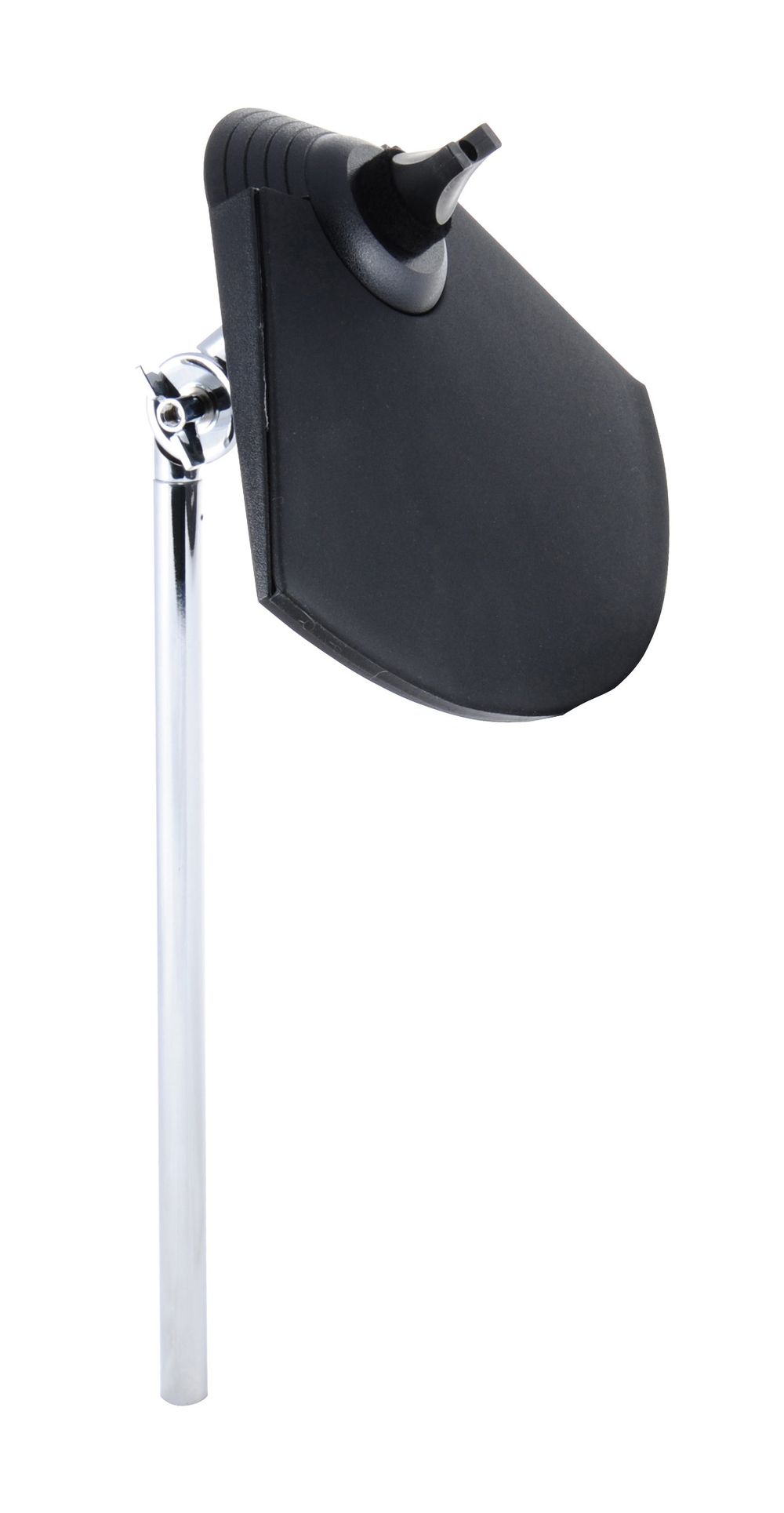
Millenium MPS-300 E-Drum Becken Pad Mono
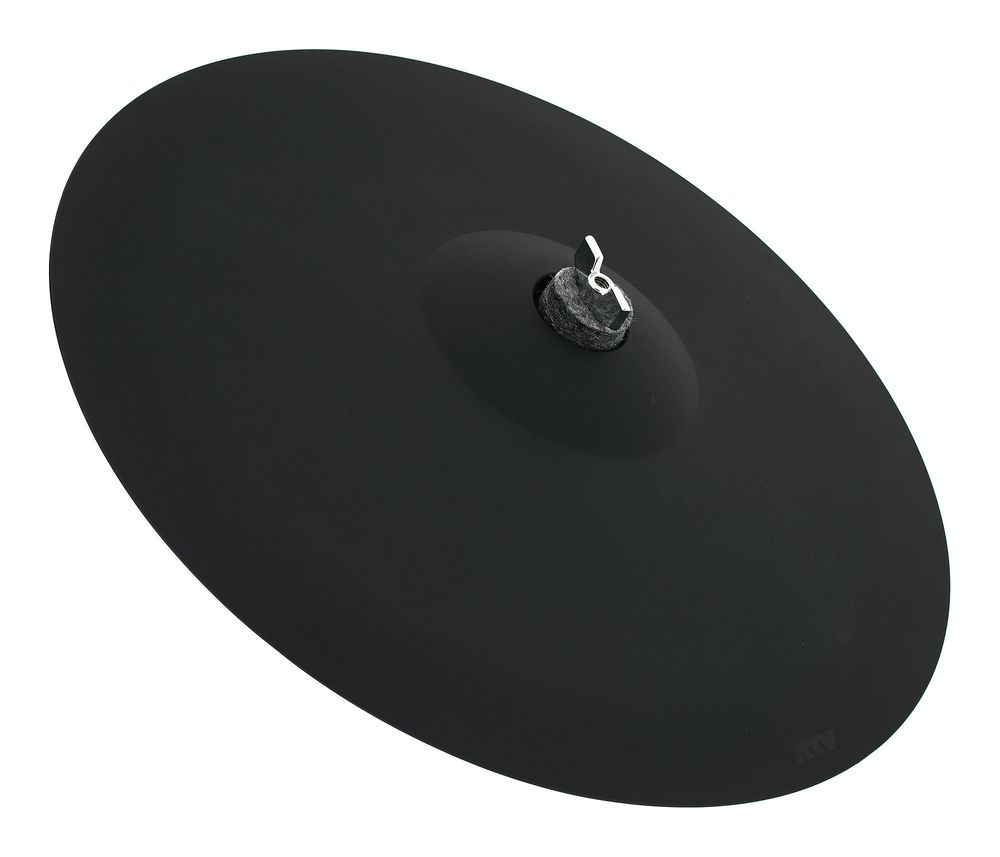
ATV aDrums Artist Series 16"Cymbal
Hi-Hat Pads and Controllers
In simple sets, a single cymbal pad is connected to a foot controller via the module, which controls the "openness" of the hi-hat electronically. The hi-hat sound changes according to the pedal position. Sophisticated sets use a conventional hi-hat machine with a special hi-hat pad that, as a counterpart, has a controller that takes over the function of the bottom cymbal. Such a combination can be opened and closed like the hi-hat on an acoustic drum kit. High-end electronic drum sets offer an almost authentic performance with good dynamic and tonal range.
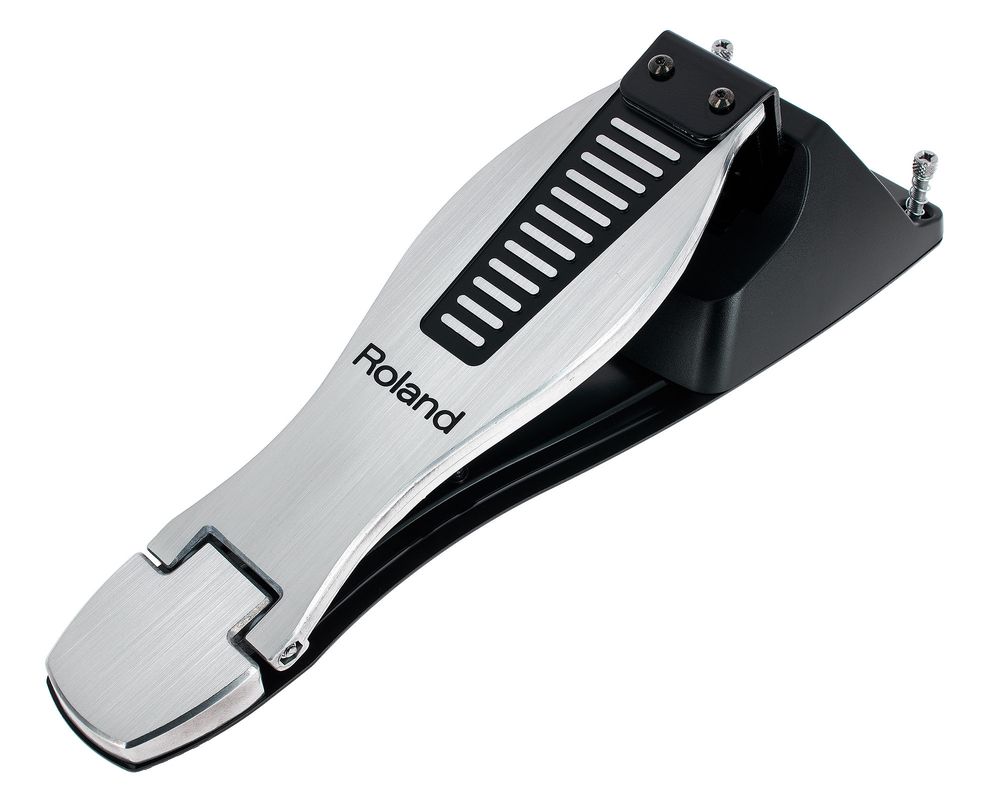
Roland FD-8 V-Drum Hi-Hat Controller
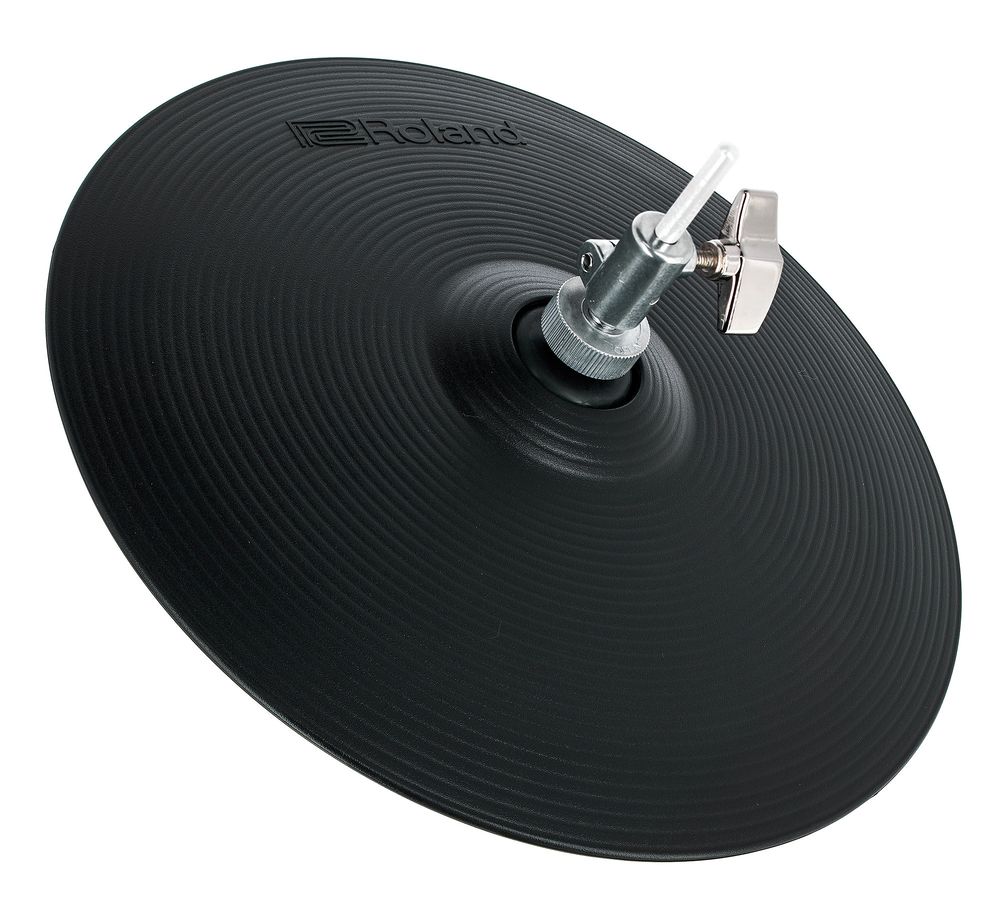
Roland VH-10 12" V-Drum Hi-Hat Pad
Rack
For most electronic drum kits, a rack serves as the backbone to which the drum module, snare, tom, and cymbal pads are attached. The electronic drum kit's rack is designed to be more compact than its acoustic counterpart, due to its smaller size. Typically, a set of two legs linked by crossbars, which support the snare, toms, and cymbals, along with a left and right boom for the floor tom, hi-hat, and drum module, is all that's needed. Large professional instruments may have more components and a rack that resembles that of an acoustic drum kit, or they may come equipped with regular cymbal and tom stands, making them visually almost indistinguishable from acoustic drum sets.
Standard racks for electronic drums are easy to assemble and disassemble and take up little space. Some drum kit manufacturers have a cool trick up their sleeves - they've hidden the cables for connecting the module and pads inside the rack tube. That's a huge plus! You won't have to worry about losing or damaging the cables, and it'll look way neater and tidier. Similar to their acoustic counterparts, electronic drum racks can be expanded with additional modules.
Standard racks for electronic drums are easy to assemble and disassemble and take up little space. Some manufacturers have placed the cables for connecting the module and pad in the rack tube, which is a great advantage as the cables are less likely to get lost or damaged, and the whole thing looks neat and tidy. Like their bigger siblings, electronic drum racks are modularly expandable, providing endless possibilities to customize and upgrade your setup.
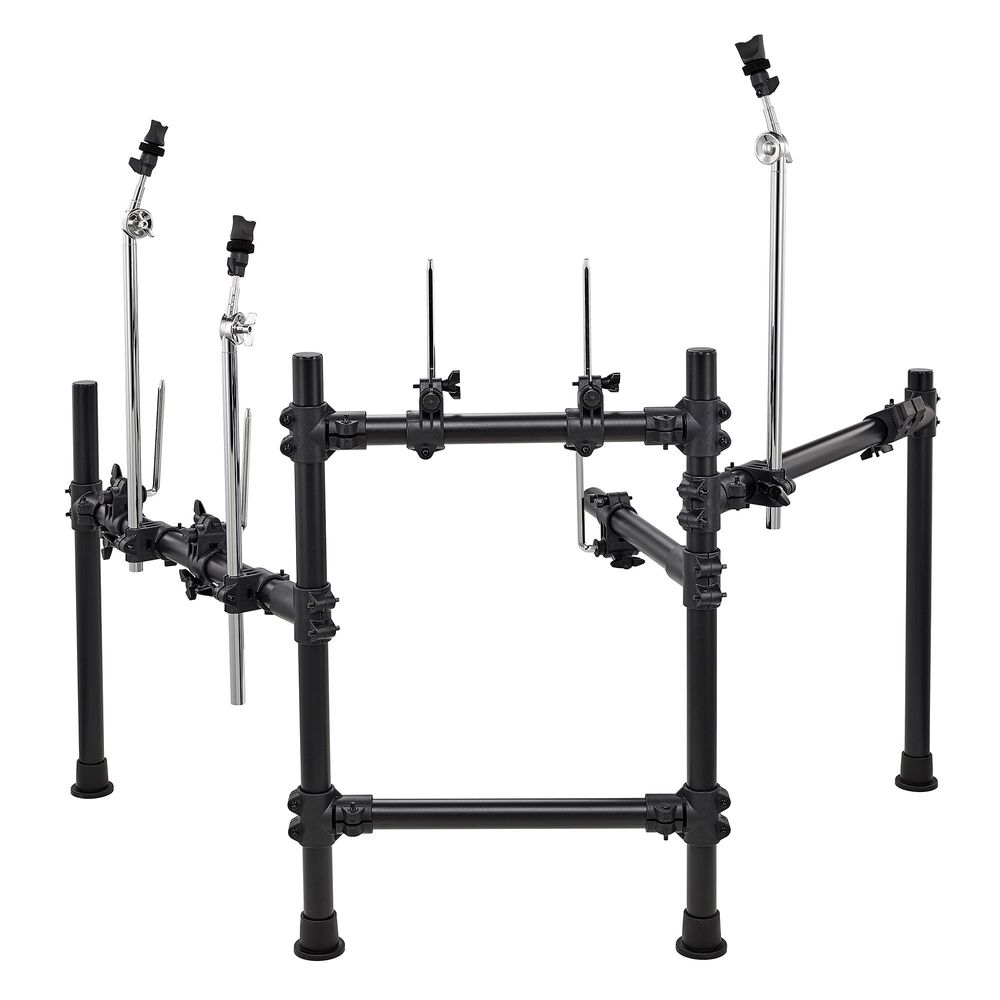
Millenium EDR-1 E-Drum Rack














